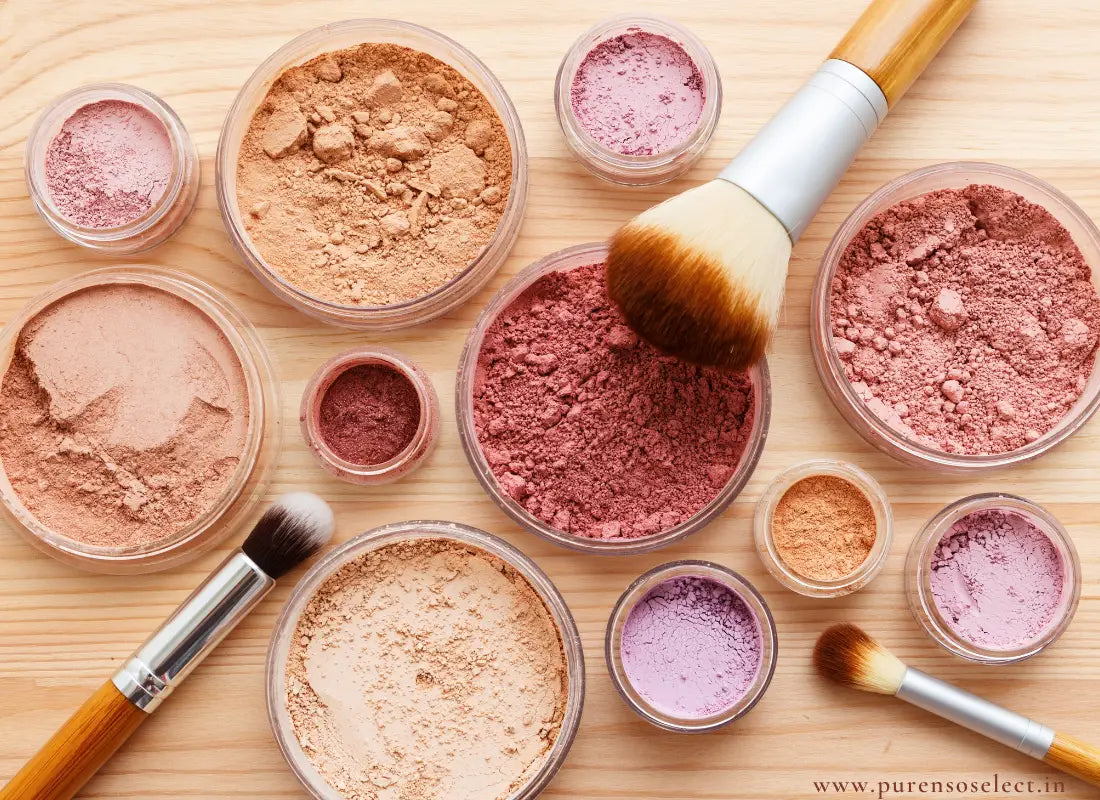
sometimes, but not always, and you will always have to make modifications unless you are ok with creating a drastically different end product.
Colored micas are made by blending mica with pure pigments; as such, they are significantly less pigmented than pure pigments as a colored mica is basically pure pigment diluted in mica.
For the purposes of this FAQ, “pigments” will include iron oxides, ultramarines, FD&C dyes, etc. These are all highly pigmented and concentrated colorful powders.
Beyond potency, it is also important to remember that micas are shimmery/shiny, while pigments are matte. Micas are also finely milled and easy to incorporate, while pigments can be lumpy and clumpy, and can require extensive mixing in order to incorporate into products smoothly. Iron oxides and titanium dioxide are typically the worst offenders for being clumpy.
I will often use a small amount of mica (~1%) to color a product without leaving any color on the skin (for example: lip balms, lotions, and body butters). If you replace mica 1-to-1 with pigment, you will get a significantly more pigmented product. You might, for instance, make a soap that stains towels, a face wash that stains the skin, or a body butter that ruins clothing after application.
Use pigments for color cosmetics, where they are used to color the skin (lipstick, eyeshadow, etc.). Because they are so concentrated, you don’t need much to get the desired effect. Use them at very low concentrations (~0.01%) to tint liquid products like hand washes or shampoos.
Some examples:
- Say you are making a lip balm that calls for mica, but you use pigment instead. A switch from mica to pigment will take you from a slightly shimmery lip balm to something more like lipstick. If you do the opposite, and use mica instead of pigment, you will get significantly less colour payoff in the end product.
- Say you’re making a foundation that calls for yellow iron oxide, but you use a yellow mica instead. That product will be: The wrong color:
- As there are many many many yellow micas in many different shades of yellow, but only one colour of yellow iron oxide
- As micas are far less pigmented than oxides, and as such will not “stand up” to the other pigments in the blend.
- Shimmery, which we do not usually want in a foundation.
- Say you’re making a bath bomb, and you use mica instead of a water-soluble dye (pigment, for this FAQ). While a tiny amount of pigment would’ve created a bath bomb that dyes the bathwater, the mica won’t do anything. Micas are also insoluble, so if you use more they will leave a ring/shiny sediment behind in the tub.
In a product like Glow Serum etc., using pigment instead of mica would noticeably change the colour of the skin rather than just adding some subtle shimmer.


